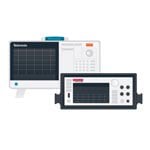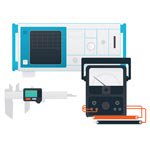
Contact us
Call
Call us at
Available 6:00 AM – 5:00 PM (PST) Business Days
Download
Download Manuals, Datasheets, Software and more:
Feedback
Protocol Trigger and Decode Application
Option PTH • Option PTU • Option STU

Option PTH • Option PTU • Option STU
Features & Benefits
- Translate Serial Data Waveforms into Character and Protocol Views for Greater Insight
- Correlate Protocol-level Events and Physical-layer Signals for More Effective Troubleshooting
- View Decoded 8b/10b Serial Data for Easier Validation of Link-level Signaling
- Analyze Serial Data from Standards Including PCI-Express, SATA, Fibre Channel, Gigabit Ethernet, XAUI, SAS, and SRIO
- Symbol Decoding for Lane Rates up to 10 Gb/s Covers a Broad Range of Implementations
- Trigger on 8b/10b Symbols and Primitives in Real Time for Fast Isolation of Low-level Faults*1
- Specify Trigger Conditions using Primitives or 8b/10b Characters*1
- Trigger on Running Disparity Errors and Character Errors in Real Time*1
- Real-time Triggering for Lane Rates up to 5.0 Gb/s*2
Applications
- Analog Validation, Debug, and Compliance Testing of Serial Data Standards Including:
- PCI Express
- Serial ATA
- Serial Attached SCSI (SAS)
- Fibre Channel
- InfiniBand
- Gigabit Ethernet
- XAUI
- Serial Rapid IO
*1 DSA70000B models and DPO70000B Option PTH models only.
*2 Max supported rates for Option PTU/STU is 5.0 Gb/s and for Option PTH is 3.125 Gb/s.
Trigger and Translate Serial Data Waveforms into Character and Protocol Views
Options PTH/PTU/STU provide trigger and decoding features for greater insight when analyzing 8b/10b encoded serial data streams. It enables users to simultaneously view waveform, character, and low-level protocol activity, simplifying validation of link-level communications and isolation of data-dependent faults.
Physical-layer Validation
Engineers implementing serial data interfaces are initially faced with debugging and validating designs for compliance with physical-layer specifications. At this stage, signal integrity and timing stability are key issues. Much of this validation and debug is done using repeating test patterns in conjunction with analysis tools such as DPOJET Jitter and Eye Analysis Software.
System-level Debugging
After ensuring physical-layer compliance, serial signals change from test patterns to 8b/10b coded traffic. System-level issues become the focus of debugging. As system operation is brought online, problems may be discovered in the physical-layer/link-layer domain. For example, a serial link may pass physical-layer testing and exhibit high-quality electrical signaling. However, faulty transmission logic or signal corruption due to data-dependent crosstalk or power plane bounce can produce incorrect symbols on a seemingly good link. Many of these effects are more efficiently discovered at a character, primitive, or higher protocol level, yet their root cause lies in the physical domain.
Effective Solution
Options PTH/PTU/STU provide correlated views of physical-layer signaling and link-layer traffic to efficiently isolate and resolve data-dependent faults such as these. In addition, all DSA70000B models with Option PTU/STU or DPO70000B models with PTH/PTU can trigger in real time on 8b/10b character sequences or 8b/10b coding errors. The combination of Option PTH/PTU/STU, DPOJET provides engineers with a complete solution for debugging, characterizing, and compliance testing systems employing high-speed serial interfaces.
Sophisticated Trigger for 8b/10b Links
All DSA70000B models with Option PTU/STU and DPO70000B models with Option PTU/STU extend Pinpoint™ trigger features to include a hardware trigger solution for 8b/10b encoded serial data. With this capability, designers can trigger conditionally on up to four consecutive 8b/10b characters specified individually or selected from a predefined list of primitives. For example, a user can select a standard such as Serial ATA and then select a specific primitive such as ALIGN. The four-character sequence K28.5 - D10.2 - D10.2 - D27.3 corresponding to the SATA ALIGN primitive is automatically set as a trigger condition. Binary trigger patterns are automatically created to recognize either running disparity or a user can require a single form. This high-level approach enables greater efficiency and fewer errors when specifying trigger conditions.
Character Sequences
Characters can also be edited independently to create one- to four-character trigger sequences. Users can work in the familiar context of an interface standard using native formats rather than interpreting wave shapes or specifying 1’s and 0’s. Control characters are specified using Kxx.y format or selected using mnemonic names such as COM or IDL. Data characters are specified using Dxx.y format or by entering their 8-bit hex value. Trigger conditions are easily correlated with data displays using this common labeling scheme.
Transmission Errors
The instrument also responds to character or running disparity errors to provide an efficient means of isolating corrupted traffic. The trigger behaves just like other Pinpoint trigger types in that it continuously monitors and immediately responds to incoming data. In other words, triggering is a real-time function rather than a postprocessing operation. In practice this makes it possible to trigger on a defined fault condition rather than capturing an arbitrary window of data and then searching to see if it contains an instance of an error. These trigger features provide a unique toolset for isolating faults or navigating in time based on reference events in an 8b/10b encoded stream.
8b/10b Decoded Views
A key element of this application is multiple synchronized views that present detailed information in the proper context. A user can observe, navigate, and correlate events using the most productive method for a given task.

Waveform View display
Waveform View
8b/10b character decoding provides critical insight into signal-data relationships. Waveform View provides a detailed look at the boundary between physical layer and link layer by graphically displaying analog signal activity, sliced digital data, and decoded characters on a common display. Zoom and scroll features simplify navigation over long streams of communications.

Character View display
Character View
Character View efficiently displays character-level information, abstracts primitives, and indicates low-level errors such as running disparity and character faults. This information is relevant to virtually all 8b/10b coded traffic and is applicable to a wide range of standards including PCI-Express, Serial ATA, Serial Attached SCSI (SAS), Fibre Channel, InfiniBand, Gigabit Ethernet, XAUI, and Serial Rapid IO.
Synchronization
Selecting an item in Character View causes display synchronization in Waveform View so proper context is maintained across the data and physical domains. For example, an unknown primitive in the Character or Protocol View can be traced to corresponding character codes and physical signal activity. With this information a designer can confidently conduct a thorough investigation.
Protocol View
Protocol View is standard-specific and provides higher levels of abstraction. Primitives consisting of four-character sequences are decoded and displayed as well as higher level structures. Option PTH/PTU/STU includes protocol selection for Serial ATA.
Additional Insight
Decoding results can be directed to a text file for archival, comparison, or further analysis.
Performance
All DSA70000B models with PTU/STU and DPO70000B models with Option PTH/PTU include hardware clock recovery to 5.0 Gb/s (3.125 Gb/s for PTH) and 8b/10b trigger and decoding.
In addition, Option PTH/PTU/STU decoding features are built on software-based clock recovery. This enables them to leverage superior instrument bandwidth and sample rate to support maximum bit rates in excess of 10 Gb/s on instruments of sufficient bandwidth.
Ordering Information
Option PTH – Protocol Trigger and Decode
Protocol Trigger and Decode for all DPO70000B models. Hardware clock recovery and 8b/10b trigger system for serial data rates up to 3.125 Gb/s.
Includes: Option Software CD with help text and electronic reference document.
ALL DSA70000B Models
The equivalent of Option PTH is included with all DSA70000B models, providing 8b/10b trigger and decoding for serial data rates up to 3.125 Gb/s.
Option PTU – Protocol Trigger and Decode
Protocol Trigger and Decode for DPO70000B models. Hardware clock recovery and 8b/10b trigger system for serial data rates up to 5.0 Gb/s.
Includes: Software CD with help text and electronic reference document.
Option STU – Protocol Trigger and Decode
Protocol Trigger and Decode for DSA70000B models. Hardware clock recovery and 8b/10b trigger system for serial data rates up to 5.0 Gb/s.
Includes: Software CD with help text and electronic reference document.



